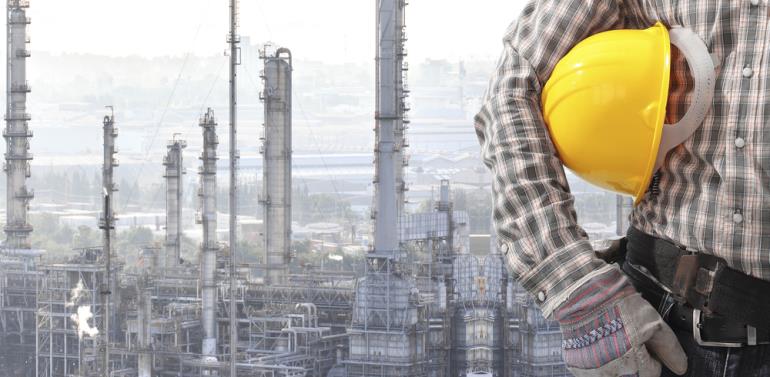International
60 reasons why oil investors should hang on – Oilprice

1. OPEC increased production in 2015 to multiyear highs, principally in Saudi Arabia and Iraq where production between the two added 1.5 million barrels per day (mb/d) to inventories after the no cut stance was adopted.
2. Russian production increased in 2015 to post Soviet highs.
3. Long planned Gulf of Mexico production began coming on in late 2015.
4. An overhang of 3,000 or 4,000 shale wells that were drilled but uncompleted (“ducks”) entered a completion cycle in 2015.
5. Service companies and suppliers went to zero margin survival pricing (not to be confused with efficiency). The result has been an artificial boost to completions that cannot be sustained.
6. Resilience among a few operators in the Permian who felt the need to thump their chests, creating the rally that killed the rally last spring (disclosure: I own stock in Pioneer Resources but am going to dump it if they don’t cut it out!).
7. The dollar strengthened.
8. Iranian exports are coming.
9. And, finally, China.
5 Demand-Side Reasons Why We Need to Hang-On:
1. Chinese oil demand is up year-over-year by 8 percent. It is expected to slow in 2016 to as low as 2 percent (maybe) but it is still growth in a tightening market.
2. Watch Chinese car sales. They were sluggish in early 2015 but finished very strong in what could be a 2016 V-shaped recovery.
3. The Indian economy is on a tear. The IMF has it as the world’s fastest growing large economy. GDP growth was 7.3 percent in 2015 and is projected to be 7.5 percent in 2016. That trumps Chinese growth. Although India’s oil demand is only one-third that of China, it is the growth picture that should be better covered by analysts and headlines. India is about to be the world’s most populous nation with a middle class that is likely to double over the next 15 years. 40 cars now service 1,000 people but that is rapidly changing. And this is not something that will occur sometime, someday in the future. 2015 Indian consumption grew by 300,000 barrels per day (bpd).
4. U.S. consumption has been increasing with higher employment and lower fuel costs. Truck and full size SUV sales have been extraordinary.
5. Europe, the world’s largest oil market, is in a decade long decline but not as steeply as it was. Asia demand is strong with Vietnam’s GDP growing 7.5 percent in 2015. Middle East countries are seeing increases in consumption. And as a final observation, go back one year when most oil analysts were looking at supply as the means to a correction. Demand was thought to be too inelastic and would thus take too long to play out. But it was demand that responded first. When the story is written, it will be demand that outplayed supply 2 to 1 on our way to parity. Thereafter, if we go into imbalance, it will be the damage done to supply that really moves prices.
16 Supply-Side Reasons Why We Need to Hang On
1. Earlier in 2015 global supply exceeded demand by about 2.2 mb/d according to the EIA. Others had it at 2.5 mb/d. The EIA now has it down to 1.3 mb/d and change. We are still nowhere near an inflection point but we are converging.
2. The rig count in OPEC’s GCC countries has not corrected down with prices. It is mostly maintenance drilling and somewhat additive in Saudi Arabia. The level of production that we have seen lately likely means the GCC is close to or at capacity.
3. There is near universal acknowledgement that there will be another 300,000 to 500,000 bpd decline in U.S. production this year. It could be more given the struggles of the onshore conventional market, which alone should give up 150,000 bpd. Shale’s steep decline rates will easily make up the rest even against increasing Gulf of Mexico production.
4. Global non OPEC, non U.S. production will decline by 300,000 to 400,000 bpd in 2016 according to the IEA. This number could increase as marginal production at current low prices comes off line due to lifting costs.
-

 Leaders Speak2 months ago
Leaders Speak2 months agoDhofar International Development and Investment Company: Driving Sustainable Growth and Strategic Synergies in Oman’s Investment Landscape
-

 Economy2 months ago
Economy2 months agoMaal Card: What Oman’s New National Payment Card Means for Everyday Users
-

 Events2 months ago
Events2 months agoOER Corporate Excellence Awards 2025 Honours Entities and Innovations in Oman
-

 Banking & Finance1 week ago
Banking & Finance1 week agoOman Oil Marketing Company Concludes Its Annual Health, Safety, Environment, and Quality Week, Reaffirming People and Safety as a Top Priority
-

 News1 month ago
News1 month agoSheikh Suhail Bahwan, Chairman of Suhail Bahwan Group, Passes Away
-

 Economy2 months ago
Economy2 months agoOman Unveils Official Omani Rial Symbol in Landmark Move to Boost Global Currency Presence
-

 News1 month ago
News1 month agoOIG Appoints New CEO to Lead Its Next Chapter of Excellence
-

 News4 weeks ago
News4 weeks agoReport: How India & The Middle East Are Exploiting Immense Economic Synergies




























You must be logged in to post a comment Login